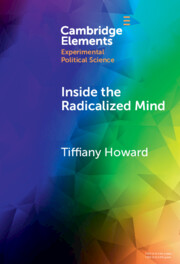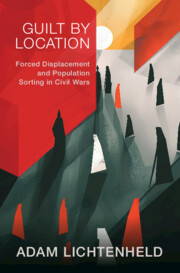Refine search
Actions for selected content:
127 results
1 - Setting the Scene
- from Part I - Preparing for God’s Wrath
-
- Book:
- Operation Wrath of God
- Published online:
- 12 August 2025
- Print publication:
- 07 August 2025, pp 17-32
-
- Chapter
- Export citation
Postclassic political conflict and isotope analysis in the central Peten lakes area, Guatemala
-
- Journal:
- Ancient Mesoamerica , First View
- Published online by Cambridge University Press:
- 04 August 2025, pp. 1-15
-
- Article
- Export citation
From Cocaine to Avocados: Criminal Market Expansion and Violence
-
- Journal:
- International Organization / Volume 79 / Issue 3 / Summer 2025
- Published online by Cambridge University Press:
- 09 September 2025, pp. 417-455
- Print publication:
- Summer 2025
-
- Article
-
- You have access
- Open access
- HTML
- Export citation
Italy’s Catholic partisan: history and narrative
-
- Journal:
- Modern Italy / Volume 30 / Issue 2 / May 2025
- Published online by Cambridge University Press:
- 08 May 2025, pp. 161-176
- Print publication:
- May 2025
-
- Article
-
- You have access
- Open access
- HTML
- Export citation

Inside the Radicalized Mind
- The Neuropolitics of Terrorism and Violent Extremism
-
- Published online:
- 31 March 2025
- Print publication:
- 24 April 2025
-
- Element
- Export citation
White Power! How White Status Threat Undercuts Backlash Against Anti-democratic Politicians
-
- Journal:
- Journal of Race, Ethnicity and Politics / Volume 10 / Issue 1 / March 2025
- Published online by Cambridge University Press:
- 19 March 2025, pp. 86-110
-
- Article
- Export citation
Rebels Do Not Take Kindly to Criticism: The Strategic Failure of Local Resistance against Colombia’s FARC
-
- Journal:
- Journal of Latin American Studies / Volume 57 / Issue 1 / February 2025
- Published online by Cambridge University Press:
- 15 August 2025, pp. 107-134
- Print publication:
- February 2025
-
- Article
-
- You have access
- Open access
- HTML
- Export citation
American Political Violence (The Government and Opposition/Leonard Schapiro Lecture 2023)
-
- Journal:
- Government and Opposition / Volume 60 / Issue 2 / April 2025
- Published online by Cambridge University Press:
- 14 January 2025, pp. 289-312
-
- Article
-
- You have access
- Open access
- HTML
- Export citation
Rethinking rebel victory in civil war
-
- Journal:
- Review of International Studies , First View
- Published online by Cambridge University Press:
- 07 January 2025, pp. 1-19
-
- Article
- Export citation
Public space at stake: competing forms of territorialisation and the construction of a democratic public space in the first years of the Italian Republic
-
- Journal:
- Modern Italy , First View
- Published online by Cambridge University Press:
- 27 December 2024, pp. 1-13
-
- Article
-
- You have access
- Open access
- HTML
- Export citation
1 - Weaponizing Displacement in Civil Wars
-
- Book:
- Guilt by Location
- Published online:
- 12 December 2024
- Print publication:
- 19 December 2024, pp 1-25
-
- Chapter
- Export citation
Hostile Sexism, Social Dominance Orientation, Political Illiberalism, and Support for Political Violence in the United States
-
- Journal:
- Politics & Gender / Volume 21 / Issue 2 / June 2025
- Published online by Cambridge University Press:
- 13 December 2024, pp. 144-168
-
- Article
-
- You have access
- Open access
- HTML
- Export citation

Guilt by Location
- Forced Displacement and Population Sorting in Civil Wars
-
- Published online:
- 12 December 2024
- Print publication:
- 19 December 2024
A Court struggling for impact: complementarity at work in Guinea
-
- Journal:
- The Journal of Modern African Studies / Volume 62 / Issue 4 / December 2024
- Published online by Cambridge University Press:
- 16 June 2025, pp. 313-336
- Print publication:
- December 2024
-
- Article
- Export citation
9 - Hopes Shattered
- from Part III - Living in Germany: 1870–1930
-
- Book:
- Germany through Jewish Eyes
- Published online:
- 14 November 2024
- Print publication:
- 21 November 2024, pp 147-162
-
- Chapter
- Export citation
South Africa’s Haymarket: the Knights of Labor and political violence in the United States and South Africa, 1886–1892
-
- Journal:
- Journal of Global History / Volume 19 / Issue 3 / November 2024
- Published online by Cambridge University Press:
- 18 September 2024, pp. 370-391
-
- Article
-
- You have access
- Open access
- HTML
- Export citation
8 - Party Instability and Political Violence
-
- Book:
- Playing with Fire
- Published online:
- 25 October 2024
- Print publication:
- 27 June 2024, pp 173-187
-
- Chapter
- Export citation
2 - A Theory of Party Instability and Political Violence
-
- Book:
- Playing with Fire
- Published online:
- 25 October 2024
- Print publication:
- 27 June 2024, pp 30-50
-
- Chapter
- Export citation
12 - Environmental Displacement and Political Violence
- from Part III - Environmental Violence Impacts, Responses, Resistance, and Alternatives
-
-
- Book:
- Exploring Environmental Violence
- Published online:
- 06 June 2024
- Print publication:
- 09 May 2024, pp 261-277
-
- Chapter
-
- You have access
- Open access
- HTML
- Export citation
What are the limits of political violence? Ebihara Toshio’s murder and the Umemoto-Kuroda controversy in 1970s Japan
-
- Journal:
- Modern Asian Studies / Volume 58 / Issue 3 / May 2024
- Published online by Cambridge University Press:
- 02 May 2024, pp. 912-937
- Print publication:
- May 2024
-
- Article
- Export citation
